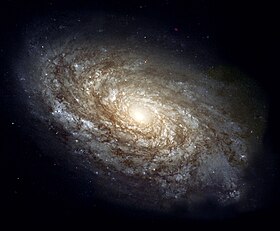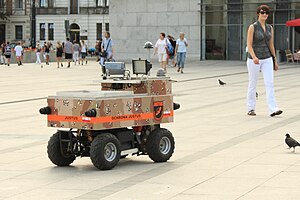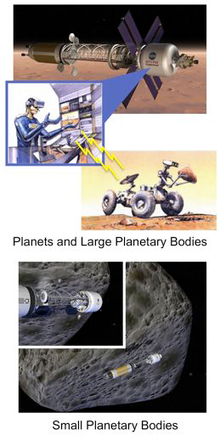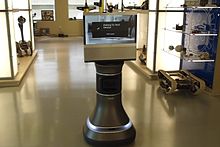
In
New Matilda's ongoing debate around nuclear energy, Barry Brook and Ben
Heard make their case for nuclear power's role in tackling climate
change.
By now, most of you would have heard that the Premier of South Australia, Labor’s Jay Weatherill, has announced a Royal Commission into an expanded future role for the state in nuclear energy. For people like us, who are both strongly focused on tackling climate change by eliminating Australia’s dependence on fossil fuels, and who consider nuclear to be an essential tool, this is real progress.
In a recent article on The Conversation, we explained the types of issues we think the Royal Commission might consider. These obviously only represent our opinions and perspectives, albeit well-informed and researched.
We cover most of the well-trodden ground on radioactive waste management and energy generation. We also explain a number of reasons, ranging from political to economic to geological, why we think South Australia is a particularly good place to kick-start any deeper foray by our nation into the nuclear fuel cycle.
One thing that particularly frustrated us was the immediate condemnation of the news by the SA Greens Party, and disappointingly, also by the Australian Youth Climate Coalition.
The whole point of Royal Commissions is the rigorous uncovering of facts, based on solid research and deep consultation with experts, government and public representatives. So why the objection?
Well, the arguments are well rehearsed and endlessly debated. Nuclear is too costly, unsafe, produces dangerous and intractable waste, is connected with weapons proliferation, is unsustainable, and besides, is unneeded.
Such a ‘washing list’ of objections is superficially convincing, and the last one in particular appeals to most people’s sensibilities. Australia is large, sunny and sparsely populated country with long, windswept coastlines. Surely then, we can (and should) do it all with wind and solar, and forget about dirty and technically complex alternatives like nuclear fission?
The thing is, with an issue as serious and immediate as climate change, we can’t afford to be carried away by wishful thinking, nor get trapped into thinking that ‘hope’ is a plan. We owe it to the future to be ruthlessly pragmatic about solutions, and accept that trade-offs are inevitable.
So, in as brief a summary as we can put it, here is the state of play was we see it.
Nuclear is expensive, at least compared to coal. But when coal pays its environmental costs (especially for air pollution and greenhouse gas emissions) nuclear is not expensive at all.
Electricity from some renewables is now comparatively cheap. But when renewables pay their full system costs to overcome variability, a renewable system is very expensive indeed.
In this context, a ‘nuclear intensive’ strategy is still likely to underpin the most viable, scalable and cost-effective pathway to replace coal.
Nuclear is the safest form of large-scale energy production, when evaluated on the basis of deaths per unit of generation.
Nuclear accidents like Chernobyl and Fukushima, although awful, are actually far less environmentally hazardous than many claim, and become ever less probable with newer, inherently safer designs.

Chernobyl
Reactor 4, which melted down in April 1986. The other three reactors at
Chernobyl continued to generate power, with the last reactor
decommissioned in 2000.
Nuclear produces radioactive waste, but this is captured almost completely and isolated, and it can be recycled many times.
When fully recycled, its half-life is 30 years, and its already tiny volume is reduced by 50 times.
Nuclear power and nuclear weapons both work by using technology to split atoms, but beyond that the relationship is complex. The international safeguards set up to constrain proliferation are extensive and one has to draw a very long bow to link weapons acquisition to commercial power generation.
Nuclear fuel is not in short supply today, and long before it does become scarce, we will be recycling the waste to produce over 100 times more zero-carbon energy that will last millennia.
To set the goal of a “100 per cent renewables grid” is, at best, logistically and economically ‘courageous’, and at worst, a foolhardy strategy that is doomed to fail.
Either way, it is detached from what we consider the actual goal. If we really want to guarantee that we can rid ourselves of fossil fuels, then renewables come together, in a combined package with nuclear fission.
That last paragraph contains a whole lot of assertions. Yet we stand by all of them, because we have looked deeply at each of those statements. We have probed them critically for flaws, tested them in consultation with experts, exposed them repeatedly to the peer-reviewed energy literature, and debated them with opponents endlessly.
It’s almost all on the public record, in our scientific publications, lectures, blogs (Brave New Climate and Decarbonise SA), books, articles and videos.
Why have we done this? If you could roll back the calendar enough years, you would find one of us (Brook) was perfectly ambivalent regarding nuclear power, and the other (Heard) was an outright opponent.
Change did not come easily, and it did not come without challenge. The biggest challenge always came from within, to make sure we were moving beyond just having opinions, and moving towards having informed and reasoned positions.
The thing is, we still are. We make mistakes and get things wrong. Our positions continue to evolve and, we hope, improve, with greater nuance, understanding and balance.
We keep learning from each other, our “opponents”, our colleagues, our students, our research, from other experts in a variety of fields and, of course, when the facts change. Our position is being tested constantly. Learning does not end.
Moreover, we reckon we’ve heard all of the counter-arguments (slanted from a variety of viewpoints!), and thought carefully about them.
Some we’ve taken onboard, some disputed, some rejected. We understand the failings of nuclear energy, and we acknowledge that it is hardly a ‘perfect solution’. But we still hold that, when balanced against the alternatives, nuclear fission is a real winner.
The biggest win will be found by using everything to get an important job done.
This short essay is definitely not the place for us to try and convince the doubters. We’ve put briefly what we consider to be the ‘key facts’ and we’ve drawn what we think are robust conclusions from them. But you should all be skeptical of our claims — and those of anyone else — until you’ve looked hard at the evidence yourselves, and ideally, tried hard to disprove your cherished beliefs, rather than comfortably prop up the world-view that you already think you ‘know’ to be right.
It’s a fun intellectual exercise to try and show yourself why you’re wrong (on any number of things), and it’s the kind of strategy that scientists use every day to learn about how things work. If you do this and still disagree with us, then that’s fine — we place great value on rigorous challenges and evidence-based rebuttals. For dealing with climate change, the bottom line is, we need a plan that will work!
To conclude, below are some sources of information that we think are particularly valuable if you want to really understand nuclear energy and the plausibility of alternative options.
There is obviously plenty more out there, but please apply critical judgment when you consider the robustness of your source material.
The new Royal Commission is going to be following a similar process of judicious knowledge acquisition, albeit a most exhaustive one. Relish the journey.
* Barry Brook is an Australian scientist. He is a professor and Chair of Environmental Sustainability at the University of Tasmania in the Faculty of Science, Engineering & Technology. He was formerly an ARC Future Fellow in the School of Earth and Environmental Sciences at the University of Adelaide, Australia, where he held the Sir Hubert Wilkins Chair of Climate Change from 2007 to 2014. He was also Director of Climate Science at the Environment Institute and co-ran the Global Ecology Lab.
* Ben Heard is an independent environmental consultant. He holds a Masters of Corporate Environmental Sustainability Management from Monash University. He is currently undertaking doctoral studies at the University of Adelaide, examing pathways for optimal decarbonisation of Australian electricity using both nuclear and renewable sources.





